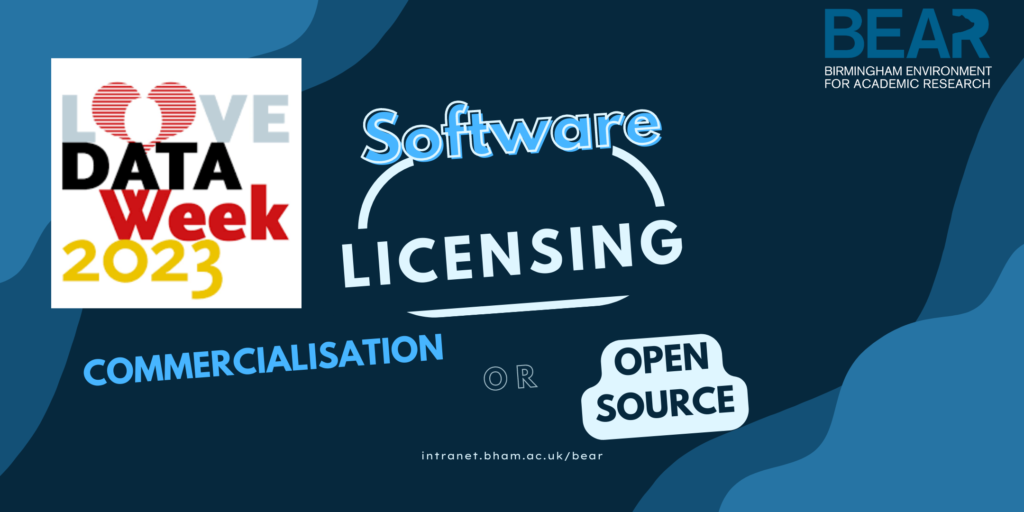
Software is increasingly important for researchers, with both research staff and students finding themselves needing to write and develop their own software to produce data (e.g. through simulations) or analyse their results. There is a need to understand how to manage software used in research, including its curation, citation and how to store and share it openly for dissemination. What is often overlooked is what kind of licence we need in order to make sure the software created is credited/cited to the researcher? Commercialisation of the software also needs to be considered – is the MIT License, one of the most commonly used and permissive open source licences, the best to use?
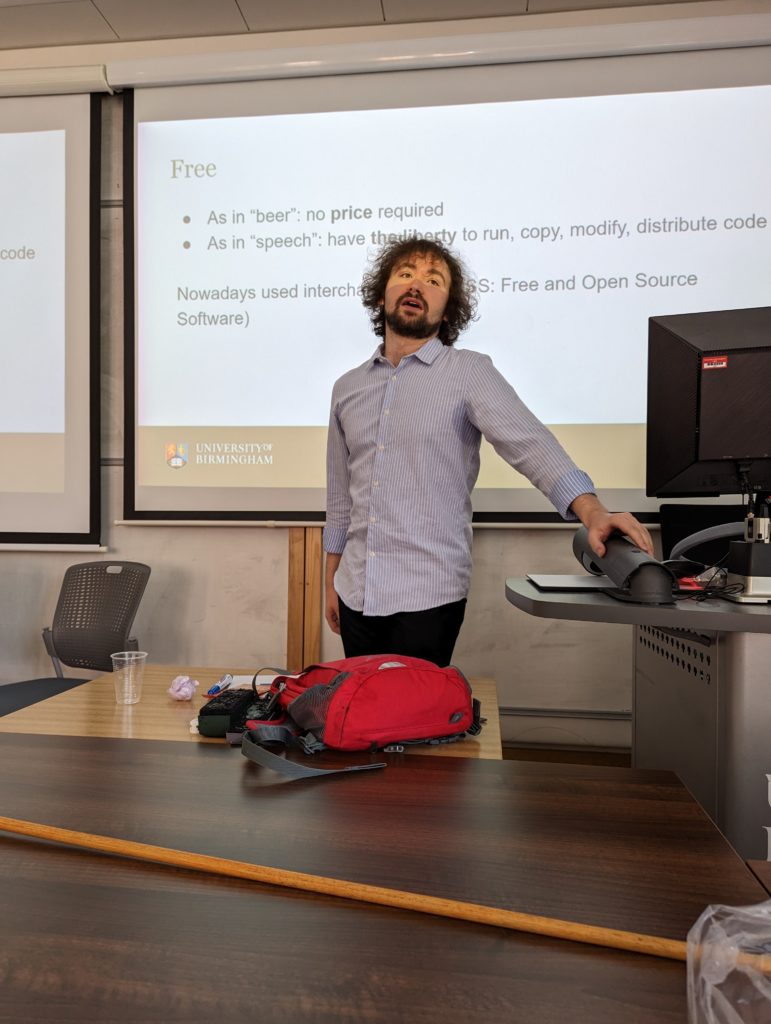
Andrei (Leonard) Nicusan, a PhD student in Chemical Engineering posed the question that he has been pondering, how can you balance the rights of the author with the rights of open source? Does pushing everything to open source negate the intellectual property of the work a researcher creates? See Leonard’s slides below:
Next up was Mariela de Amstalden (Birmingham Law School), who is an Assistant Professor who specialises in intellectual property (IP) rights, technology and innovation law, as well as global economic governance.
Mariela talked about copyright being a right to negate the use of the software, rather than giving others the right to use the software. She talked initially about how we should look at it using a legal standard (Altai test) – can it be upheld, what difference does it make if it is a student or staff, and how the university’s code of practice for research affects it. There are so many different avenues to review and each case has nuances, which affects guidance to be given.
The Altai test (developed in Computer Associates v Altai [1992]), is a US case that looks at levels of abstraction, filtration and comparison to determine software copyright infringement.
During the discussion, Mariela asked for an example from Andrei, to bring it into context, which sparked a lively conversation involving other attendees.
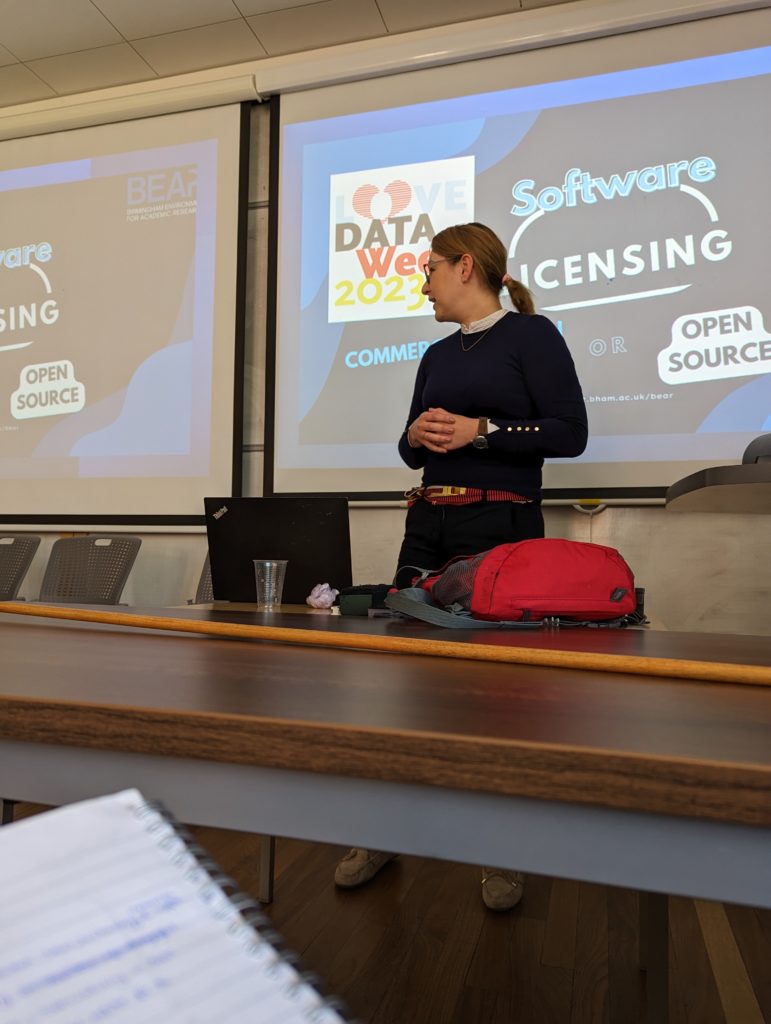
Alex Fenlon, who heads up the copyright & licensing team within the Library, then gave a background/history of copyright.
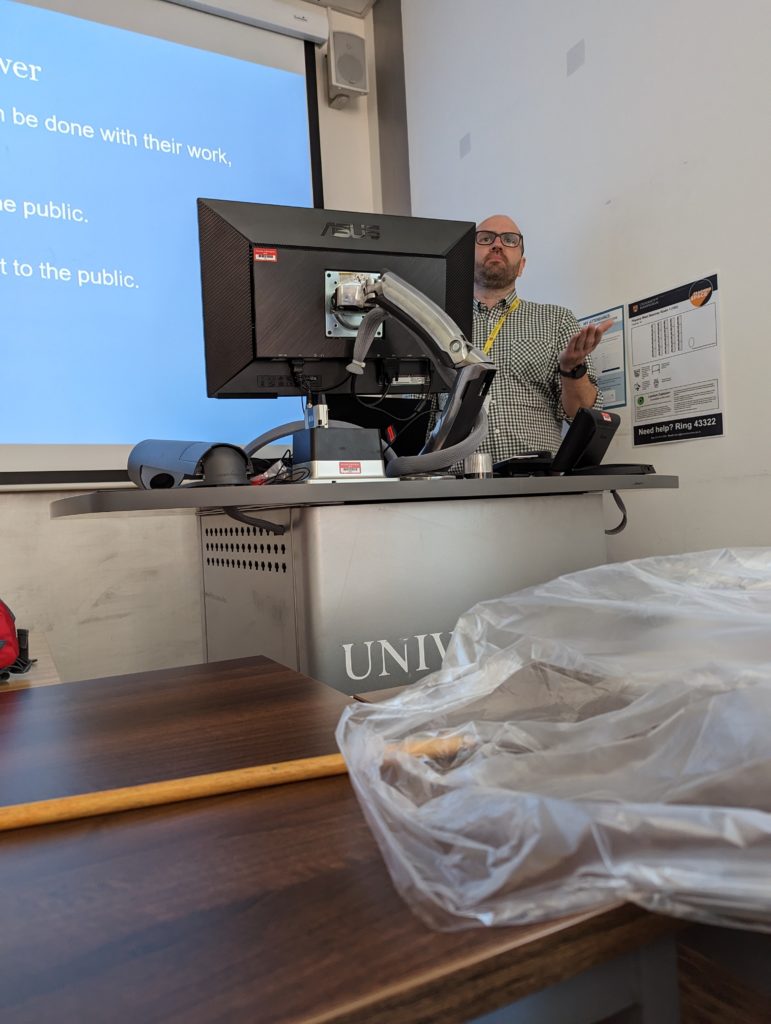
Alex focussed primarily on ‘Literary works’ (which software and code fall into) and talked about copyright and moral rights. The outcome was to create a balance, taking the section from the US Constitution, which Alex reports encapsulates why you should make the code open “to promote the progress of science and useful arts, by securing for limited times to authors and inventors the exclusive right to their respective writings and discoveries“. See Alex’s slides below:
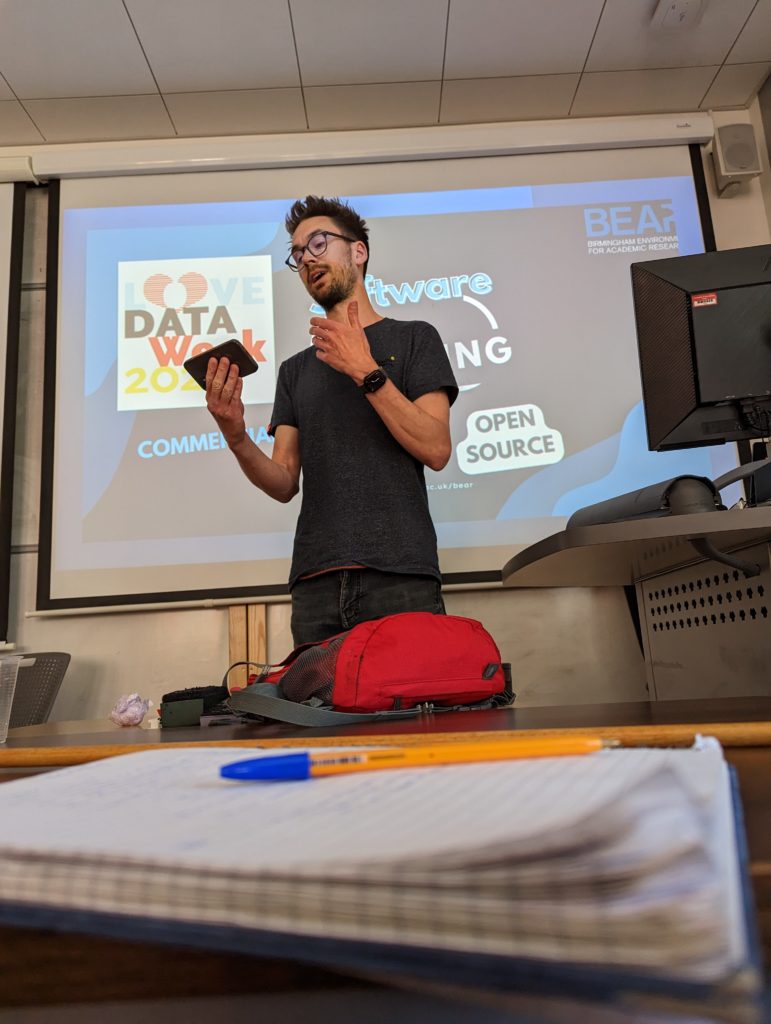
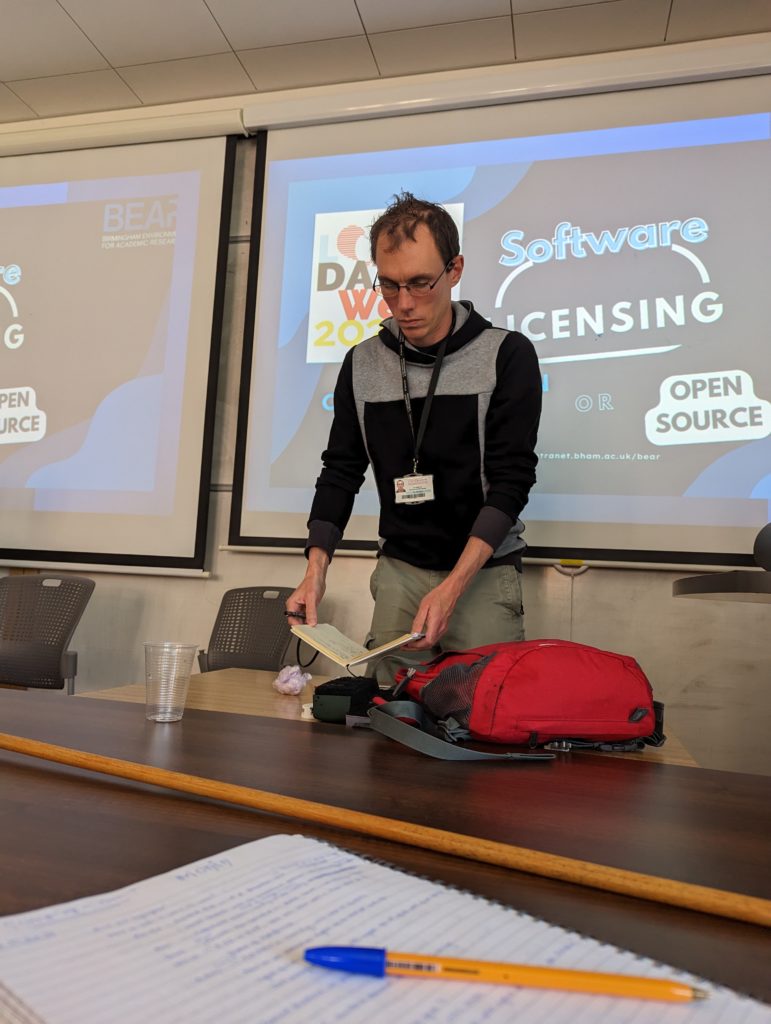
Next, we had a double act, both from the BEAR team, James Carpenter and Warrick Ball. They talked about the application of licenses they had utilised, and issues they had faced when trying to install software on BlueBEAR, our supercomputer, here at UoB.
In essence, the conclusion was to license it, it doesn’t matter which one, as this can be changed or revoked later on, unless you’ve already gone down the route of commercialisation.
Any queries or questions then get in touch with Legal services.
Capturing conversations proved challenging due to their dynamic nature, with ideas emerging, some being quickly dismissed, and new paths being explored. The limited time available led to conversations carrying on long after the session finished.
We were so pleased to be part of this scintillating discussion and would like to hear from anyone who may have a question, where we can deep dive with peers and experts – if so then do get in contact with us at bearinfo@contacts.bham.ac.uk.
